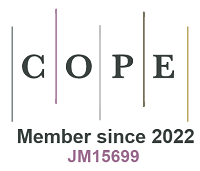Two-dimensional hierarchically porous C3N4 for photocatalysis: perspective and challenges
Abstract
Owing to its unique structure, porosity and photoresponse properties, two-dimensional hierarchically porous
Keywords
INTRODUCTION
Since Geim and Novoselov[1], for the first time, prepared two-dimensional (2D) graphene via the exfoliation of graphite by Scotch tape 20 years ago and revealed the fantastic performance of such innovative material[1,2]. A variety of outstanding characteristics of 2D graphene have been exploited, facilitating its applications in catalysis, biosensors, energy storage, optoelectronic devices, etc.[3]. In the past decade, a great deal of work has been conducted to investigate other 2D nanomaterials beyond graphene[4,5]. Furthermore, hierarchical pores are frequently produced on the 2D nanomaterials during the specific synthesis processes such as thermal-exfoliation and hydrothermal treatment, making 2D-hierarchically porous (HP) materials a research spot in current studies[6]. Owing to the large surface area, low density, tunable electronic bandgap configuration and good light response properties, 2D nanomaterials commonly present superior activity than the bulk counterpart in photocatalysis, thermocatalysis and electrocatalysis fields[7].
Furthermore, the HP structure is also favorable for improving the chemical and physical properties of nanomaterials[8]. To be specific, hierarchical pores could make materials with facile mass diffusion channels, lower density, and rich surface reaction sites, enabling them to be more proficient in light utilization, electron/ion migration, and reactant diffusion. Thus, hierarchically porous materials are deemed as a kind of important candidates in environmental protection and energy evolution/storage fields including environmental photocatalysis, gas detection, toxic substance elimination, waste decomposition, etc.[9]. The 2D-HP materials could couple the structure, morphology and electronic band gap merits from both 2D and HP materials, therefore showing extraordinary photocatalytic performance. Their light absorption ability is superior to other kinds of materials because of the multiple light scattering effect[10]. Meanwhile, the impassable channels could completely be penetrated, abundant edges and boundaries would be generated, and almost all the positions of 2D-HP materials could be contacted to the surrounding reaction media and the reactants, thus accelerating the diffusion of reactant molecules into the inner space of materials. Nevertheless, the fact that the nanosheets are prone to agglomeration in aqueous solution should be paid more attention in future studies.
In the past decade, 2D-HP C3N4, as an emerging class of nanomaterials, has appealed to extensive study, which usually exhibits a plate-like morphology and consists of ultrathin layers[11,12]. Because of its outstanding light response, abundant reactive sites, large surface area and tunable electronic characteristics, 2D-HP C3N4 is considered as a high-performance advanced functional material [Figure 1A and B]. Nowadays, environmental pollution and energy shortage issues have appealed to increasing concerns[13]. In this regard, 2D-HP C3N4 is extensively studied as a promising photocatalyst to convert solar energy into chemical energy to drive various photocatalytic reactions such as pollutant degradation, hydrogen evolution, H2O2 production, and CO2 reduction.
Figure 1. (A) Advantages of 2D-HP C3N4 materials in photocatalysis; (B) Schematic structure of C3N4 photocatalyst; (C and D) Photograph of C3N4 powder and the low density; (E) TEM image of boron-doped 2D-HP C3N4; (F) Photographs for the aqueous dispersion of the different C3N4 samples; (G) Images of water droplets on the C3N4 thin films; (H) SEM and (I) TEM images of 2D porous C3N4; (J) Photocatalytic H2 evolution rate over various photocatalysts. 2D-HP: Two-dimensional hierarchically porous; TEM: transmission electron microscopy; SEM: scanning electron microscope.
UNIQUE PROPERTIES OF 2D-HP C3N4 IN PHOTOCATALYSIS
Migration kinetics of electron/ion
The electron/ion migration kinetics is highly important for the activity of photocatalysts in chemical reactions[14]. The 2D-HP material possesses apparent advantages for ion/charge carrier diffusion and shift via coupling the characteristics of 2D configuration, which displays outstanding electronic properties and abundant exposed atoms on the surface, and HP material, which has a large specific surface area, low density and excellent accessibility [Figure 1C and D]. In particular, 2D-HP C3N4 can offer a high exposed surface with rich channels for solution, electrolyte and gas, thus effectively improving their wetting and penetration ability. Meanwhile, the carrier shift, charge transport, and reactant diffusion between various phases and the surface reaction rates of C3N4 are significantly enhanced. For example, boron-doped 2D-HP C3N4 [Figure 1E] displayed much higher photocatalytic H2O2 evolution ability than other 2D C3N4 samples without hierarchical porous configuration and other developed nonporous nanoplates[10]. The superior photocatalytic activity is attributed to the function of hierarchical pores on 2D nanosheets, which could reduce the shift way of O2 via facile cross-plane movement of reactants to the reactive centers and make the migration of photoinduced electrons to the surface much easier. More importantly, the unique structure leads to good wetting ability and makes the reaction more efficient in aqueous solution [Figure 1F and G].
Surface active sites
Generally, the photocatalytic activity is positively correlated with the amount of reactive centers in which the adsorption of reactant molecules and photogenerated carriers shift are carried out[15]. Typically, Xiao et al. adopted a facile bottom-up strategy to fabricate 2D few-layer C3N4 with rich pores on its surface
Stability and corrosion resistance ability
Layered 2D materials are usually prone to aggregation and accumulation, generating a compact configuration that leads to decreased surface area, poor surface reactive center, restricted mass/charge transport, and, therefore, attenuated photocatalytic activity[16]. For instance, the van der Waals interaction and p-p stacking frequently result in serious aggregation of C3N4 nanosheets and prohibit the transfer of reactant molecules and intermediate species, hence damaging the activity of C3N4 during the reaction process[13]. The generation of abundant pores into nanosheets could effectively alleviate this issue by reducing the van der Waals force between the 2D nanosheets. Furthermore, it has been found that the creation of pores on 2D materials apparently stabilizes ultrathin 2D structure by reducing the surface energy[17,18]. From another perspective, the shortened mass transfer pathway and facile shift of photogenerated carriers from 2D-HP materials tightly attracted reactants between solution and photocatalyst[19-22], thus bringing out a low corrosion degree of photocatalyst and increased stability of 2D materials. Typically, Wu et al. prepared 2D porous C3N4 nanosheets via a solvothermal reaction with subsequent vacuum freezing-drying treatment[12]. The obtained 2D g-C3N4 exhibits outstanding recycling stability for H2 evolution reaction for 100 h, being ascribed to the structure and porosity merits.
SUMMARY AND PERSPECTIVE
In short, 2D-HP C3N4, as an emerging advanced material, has displayed significant potential for pollutant elimination and sustainable energy production owing to its structure, morphology and electronic band gap merits. The photocatalytic activity and cycling stability of current 2D-HP C3N4-based materials have met the requirement of organic pollutant decomposition and H2/H2O2 production to a certain extent in the laboratory. However, there is still a long road to achieve the demand of industrial application of 2D-HP
DECLARATIONS
Authors’ contributions
Prepared the manuscript: Ding Y, Wang C, Han N, Liu M, Zheng R, Chen LH, Zhong J
Performed manuscript editing: Su BL
Availability of data and materials
Not applicable.
Financial support and sponsorship
This work was financially supported by the National Natural Science Foundation of China (No. 22402044) and Zhejiang Provincial Natural Science Foundation of China (No. LQ24E020011). The work was also sponsored by the Program for Changjiang Scholars and Innovative Research Team in University (IRT_15R52) of the Chinese Ministry of Education, the Program of Introducing Talents of Discipline to Universities-Plan 111 (Grant No. B20002) from the Ministry of Science and Technology and the Ministry of Education of China, and the European Commission Interreg V France-Wallonie-Vlaanderen project “DepollutAir”.
Conflicts of interest
Su BL, serving as Editor-in-Chief of Chemical Synthesis, was not involved in the editorial process of the work. Chen LH, serving as a Junior Editorial Board member of Chemical Synthesis, was involved in the editorial process of the work. The other authors have declared that they have no conflicts of interest.
Ethical approval and consent to participate
Not applicable.
Consent for publication
Not applicable.
Copyright
© The Author(s) 2024.
REFERENCES
3. Novoselov KS, Fal’ko VI, Colombo L, Gellert PR, Schwab MG, Kim K. A roadmap for graphene. Nature 2012;490:192-200.
4. Wang H, Wang L, Luo Q, et al. Two-dimensional manganese oxide on ceria for the catalytic partial oxidation of hydrocarbons. Chem Synth 2022;2:2.
5. Zhang H, Chhowalla M, Liu Z. 2D nanomaterials: graphene and transition metal dichalcogenides. Chem Soc Rev 2018;47:3015-7.
6. Peng X, Chen L, Liu Y, et al. Strain engineering of two-dimensional materials for energy storage and conversion applications. Chem Synth 2023;3:47.
7. Ding Y, Wang C, Pei L, et al. Emerging heterostructured C3N4 photocatalysts for photocatalytic environmental pollutant elimination and sterilization. Inorg Chem Front 2023;10:3756-80.
8. Ding Y, Huang L, Barakat T, Su BL. A novel 3DOM TiO2 based multifunctional photocatalytic and catalytic platform for energy regeneration and pollutants degradation. Adv Mater Interfaces 2021;8:2001879.
9. Li H, Li C, Wang YY, et al. Selenium confined in ZIF-8 derived porous carbon@ MWCNTs 3D networks: tailoring reaction kinetics for high performance lithium-selenium batteries. Chem Synth 2022;2:8.
10. Ding Y, Maitra S, Wang C, et al. Hydrophilic bi-functional B-doped g-C3N4 hierarchical architecture for excellent photocatalytic H2O2 production and photoelectrochemical water splitting. J Energy Chem 2022;70:236-47.
11. Xiao Y, Tian G, Li W, et al. Molecule self-assembly synthesis of porous few-layer carbon nitride for highly efficient photoredox catalysis. J Am Chem Soc 2019;141:2508-15.
12. Wu X, Wang X, Wang F, Yu H. Soluble g-C3N4 nanosheets: facile synthesis and application in photocatalytic hydrogen evolution. Appl Catal B 2019;247:70-7.
13. Ding Y, Maitra S, Estaban DA, et al. Photochemical production of hydrogen peroxide by digging pro-superoxide radical carbon vacancies in porous carbon nitride. Cell Rep Phys Sci 2022;3:100874.
14. Ding Y, Maitra S, Halder S, et al. Emerging semiconductors and metal-organic-compounds-related photocatalysts for sustainable hydrogen peroxide production. Matter 2022;5:2119-67.
15. Ding Y, Wang CH, Zhong JS, et al. Three-dimensionally ordered macroporous materials for pollutants abatement, environmental sensing and bacterial inactivation. Sci China Chem 2023;66:1886-904.
16. Yin Y, Kang X, Han B. Two-dimensional materials: synthesis and applications in the electro-reduction of carbon dioxide. Chem Synth 2022;2:19.
17. Liu H, Cheng D, Chen F, Zhan X. 2D porous N-deficient g-C3N4 nanosheet decorated with CdS nanoparticles for enhanced visible-light-driven photocatalysis. ACS Sustainable Chem Eng 2022;8:45.
18. Ding Y, Yang G, Xiang Z, et al. Design of two-dimensional porous photocatalysts and their applications in solar fuel and valuable chemical production. J Environ Chem Eng 2024;12:113483.
19. Jiang X, Chen R, Chen YX, Lu CZ. Research progress of photoelectrochemical conversion of CO2 to C2+ products. Chem Synth 2024;4:46.
20. Ding Y, Wang C, Bandaru S, et al. Cs3Bi2Br9 nanoparticles decorated C3N4 nanotubes composite photocatalyst for highly selective oxidation of benzylic alcohol. J Colloid Interface Sci 2024;672:600-9.
21. Ding Y, Ye Y, Wang C, et al. “Light battery” role of long afterglow phosphor for round-the-clock environmental photocatalysis. J Cleaner Prod 2024;450:142041.
Cite This Article
How to Cite
Download Citation
Export Citation File:
Type of Import
Tips on Downloading Citation
Citation Manager File Format
Type of Import
Direct Import: When the Direct Import option is selected (the default state), a dialogue box will give you the option to Save or Open the downloaded citation data. Choosing Open will either launch your citation manager or give you a choice of applications with which to use the metadata. The Save option saves the file locally for later use.
Indirect Import: When the Indirect Import option is selected, the metadata is displayed and may be copied and pasted as needed.
About This Article
Copyright
Author Biographies








Data & Comments
Data


















Comments
Comments must be written in English. Spam, offensive content, impersonation, and private information will not be permitted. If any comment is reported and identified as inappropriate content by OAE staff, the comment will be removed without notice. If you have any queries or need any help, please contact us at [email protected].